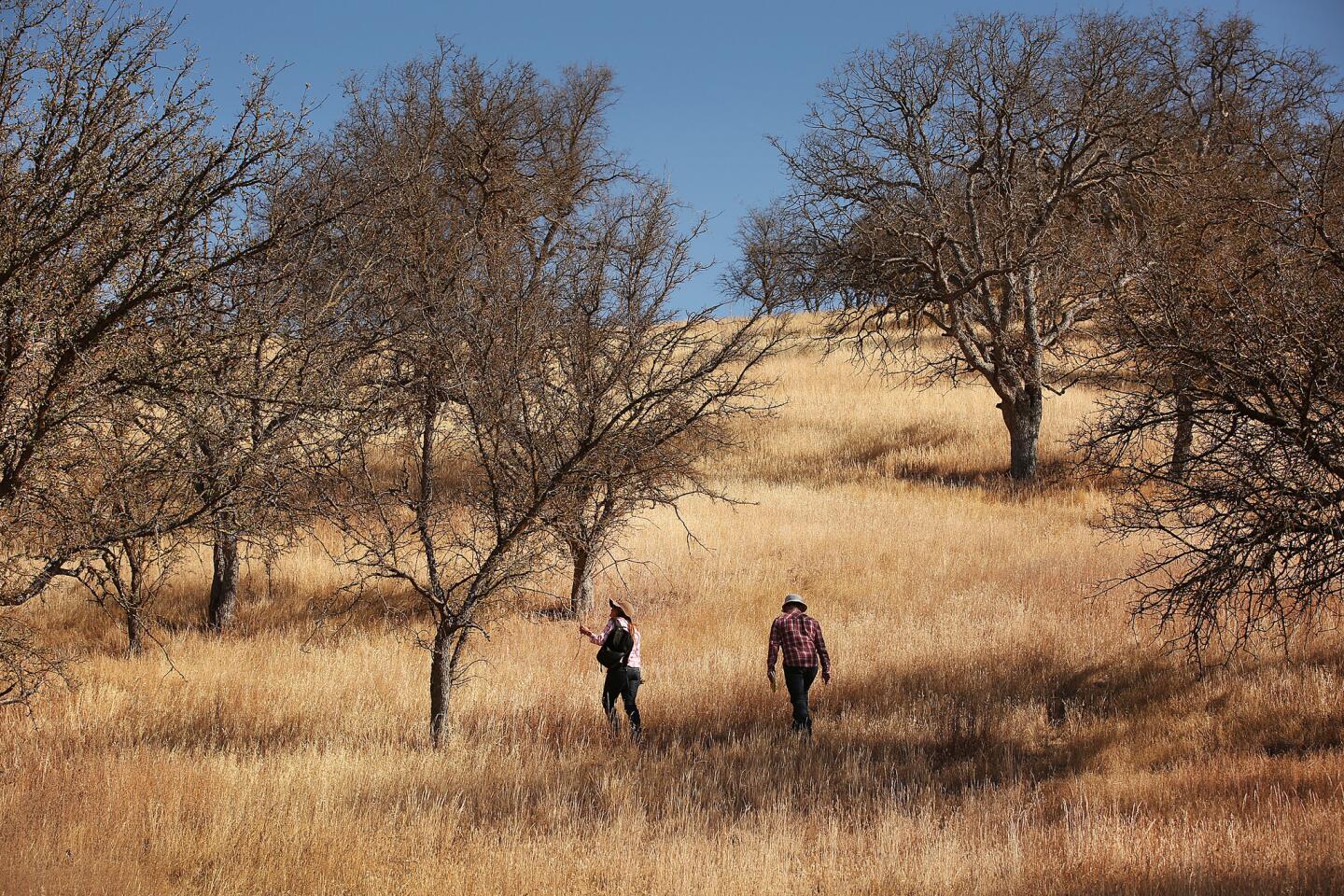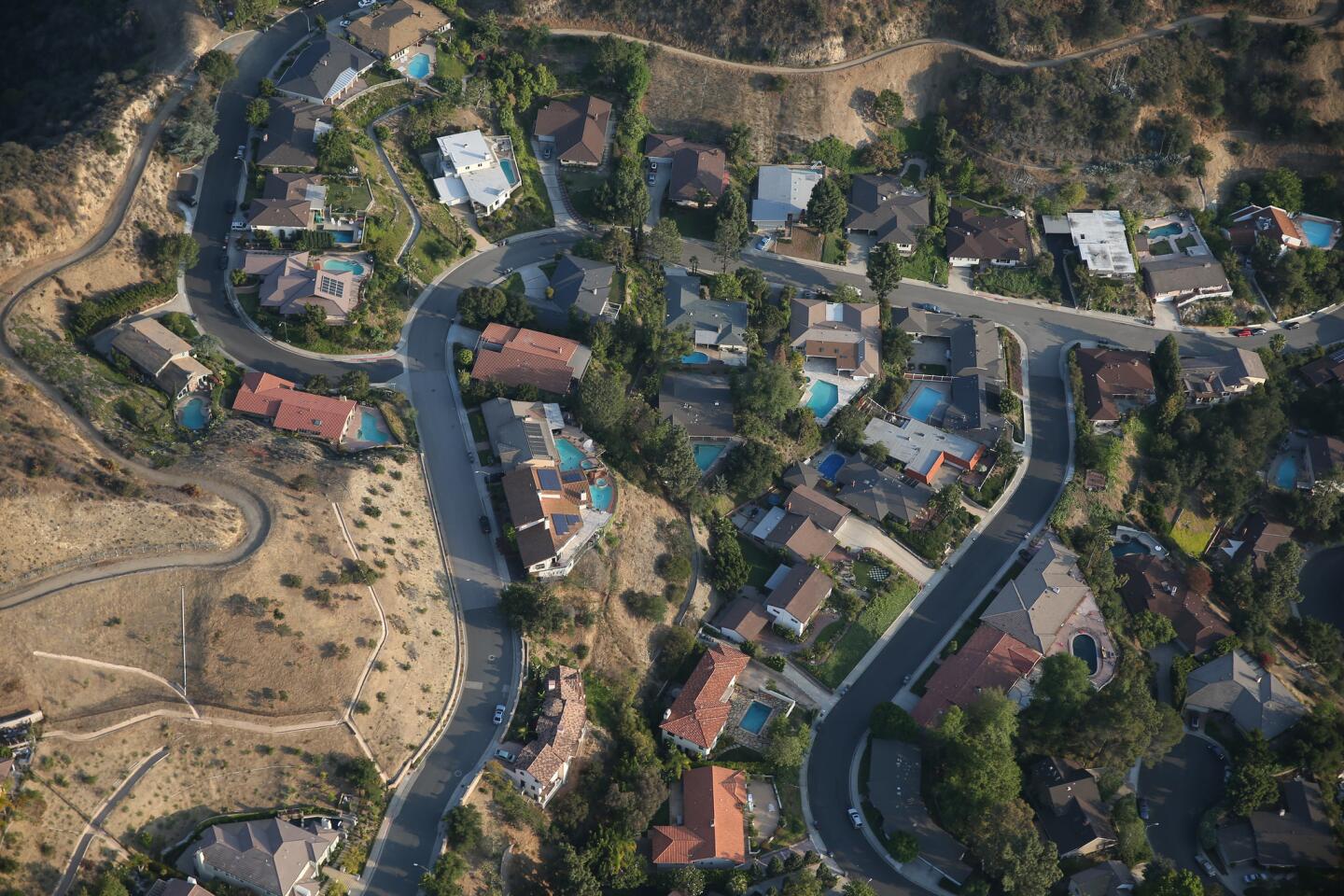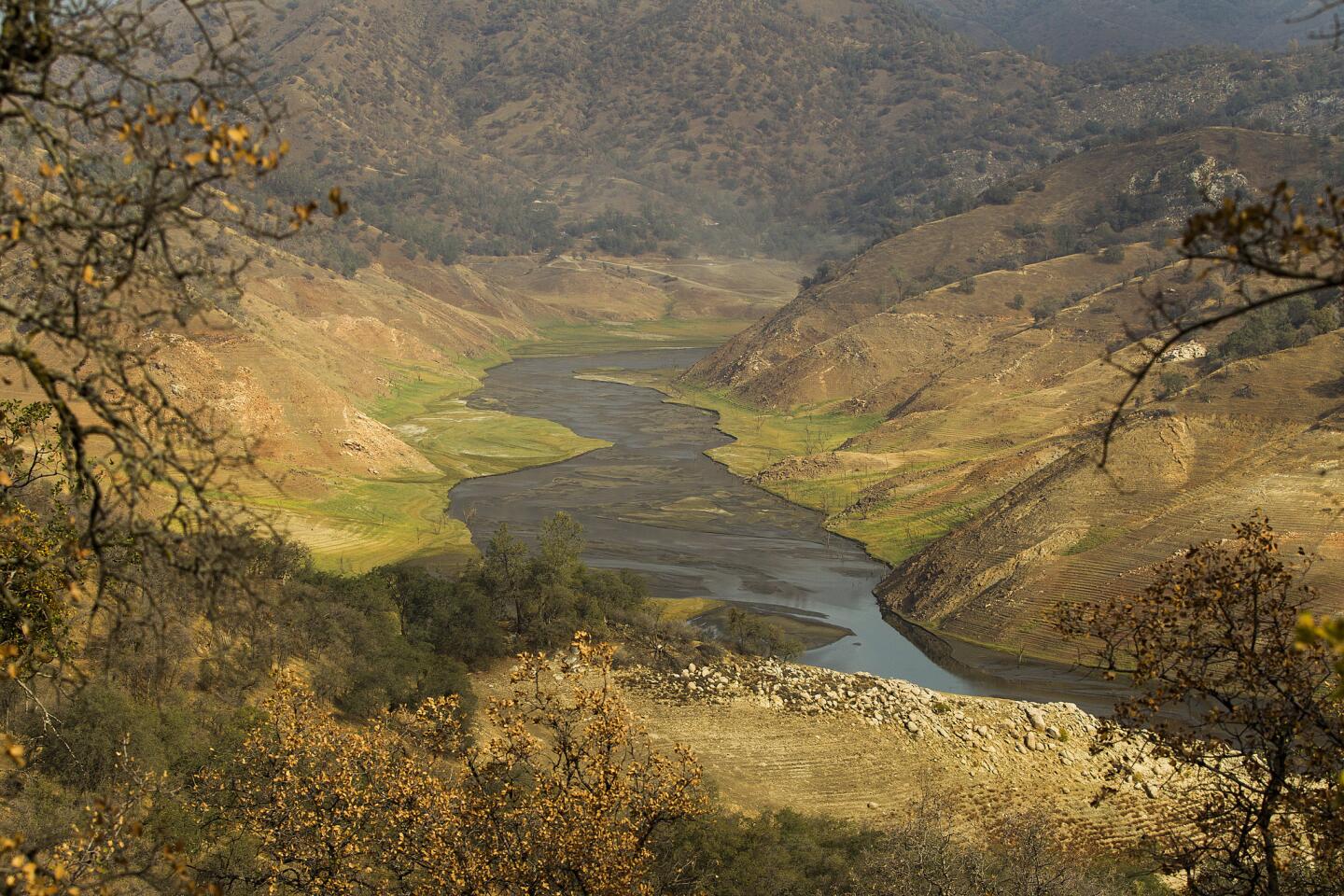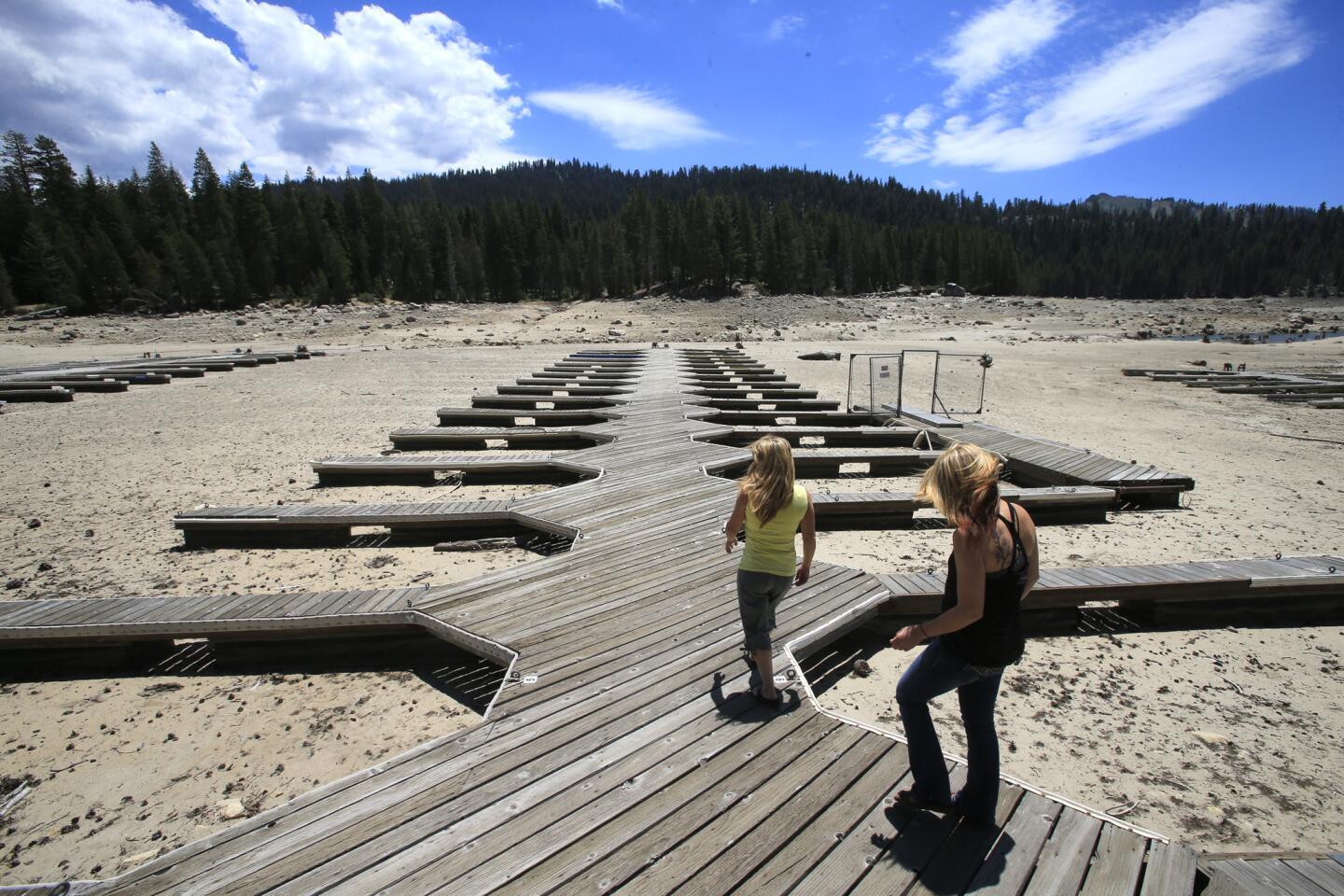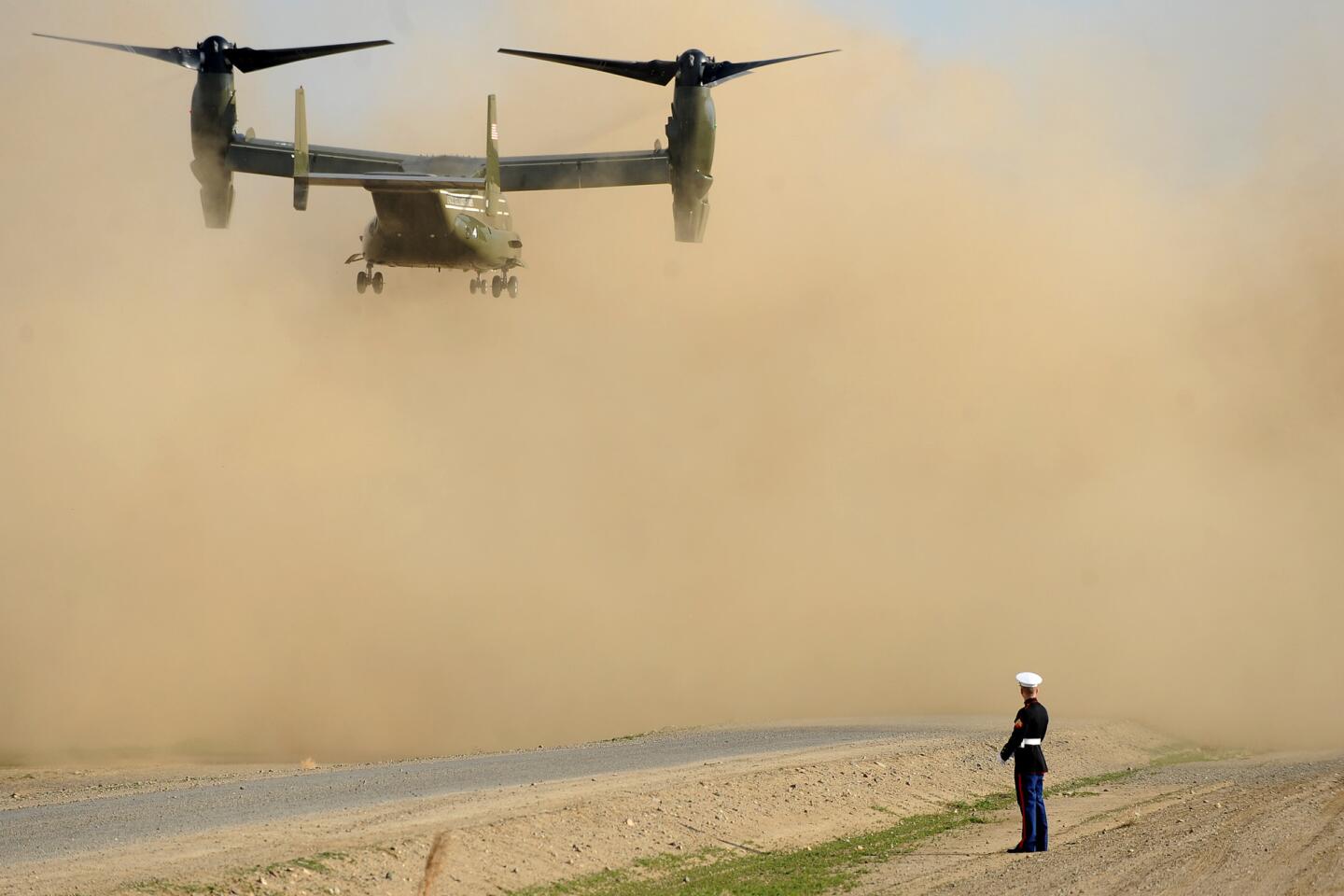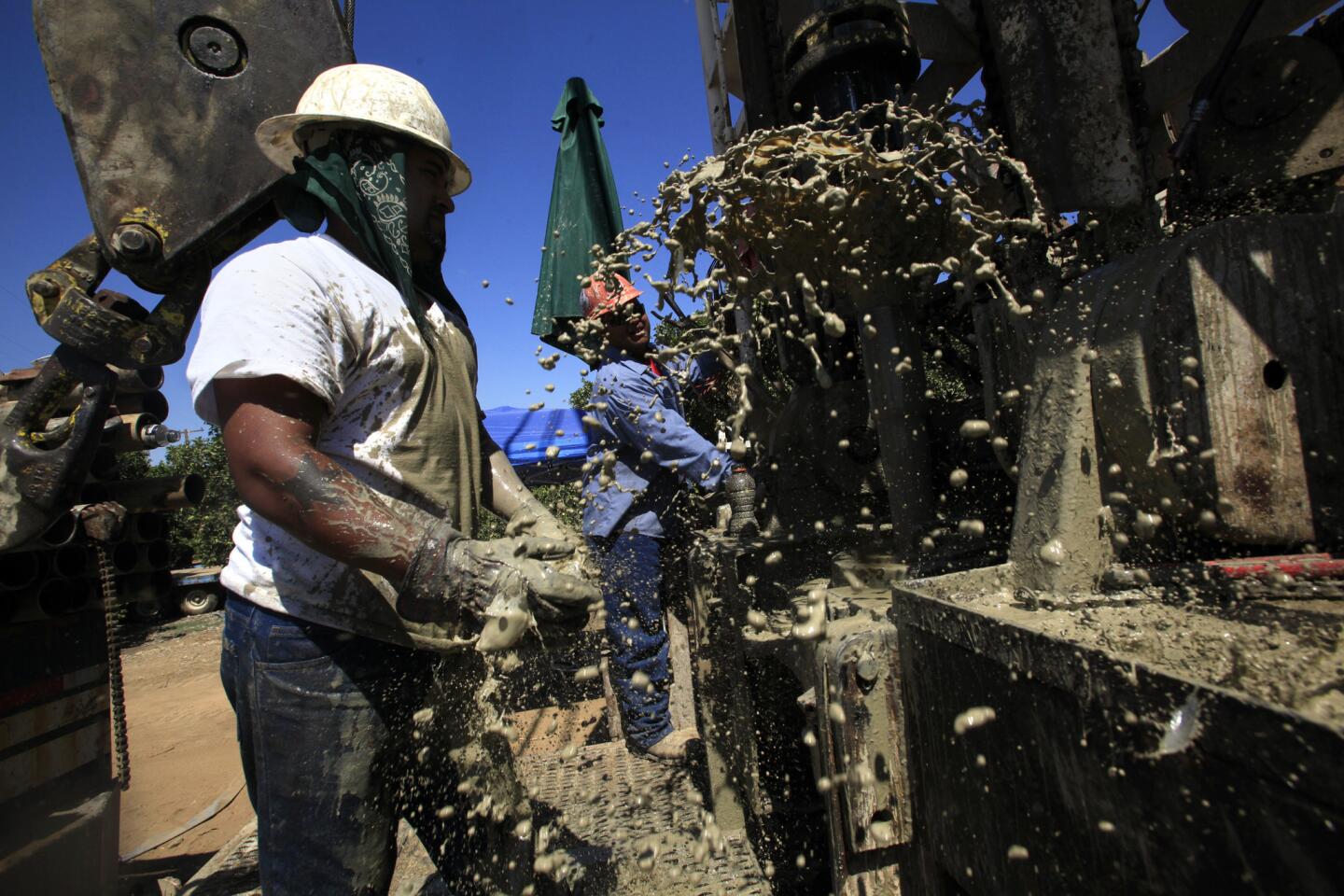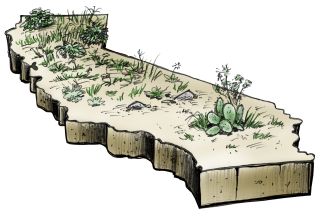‘We can’t relax our guard,’ state water official warns as conservation effort lags
- Share via
For the first three years of California’s drought, calls for water conservation got little traction.
Then in April, Gov. Jerry Brown ordered a mandatory 25% cut, and California took notice. Through the summer, residents slashed water use dramatically, up to 31% in July.
But in August, conservation dipped for the first time since Brown’s order took effect.
Californians cut back their urban water use in August by 27% compared with the same month in 2013, state regulators announced Thursday.
Officials blame August’s extreme heat and lack of rain — especially compared with July — for the uptick in water use.
Still, the numbers underscore concern that California’s water-savings zeal could fade during the cooler, wetter winter months and especially in those that follow.
“If it’s really very wet for four months, are people going to go back to their old water-wasting ways?” said Mark Gold, associate vice chancellor for environment and sustainability at UCLA. “That’s a question that only time will tell.”
The National Weather Service has predicted a 95% chance of El Niño continuing throughout the winter. Experts say the weather pattern could bring major storms to Southern California.
Thursday, state water officials said that regardless, residents must continue conserving just as if no rain or snow were to occur.
“We can’t roll the dice when we’re still in the worst drought we’ve seen,” said Felicia Marcus, chairwoman of the State Water Resources Control Board. “We can’t relax our guard.”
In a water year in which California experienced abnormally high temperatures and suffered from record-low snowpack, Marcus and a chorus of water experts have pointed to urban conservation as a bright spot.
Because Californians have saved so much, regulators have largely been able to avoid levying big fines on local water districts for failing to meet their conservation targets — which range from 4% to 36% compared with 2013 levels.
Los Angeles cut its water use 17.4% compared with the same month in 2013 — good enough to eclipse its 16% conservation target. But about 28% of urban water providers missed their targets in August — a tick higher than in July.
Water Board Climate and Conservation Manager Max Gomberg said that some cities had fallen so far behind in their conservation efforts that achieving their mandated goals by February would be “a really high mountain to climb.”
Gomberg singled out Pasadena and Redlands by way of example. In order to meet their respective 28% and 36% conservation targets, residents and businesses in those communities would need to cut water use by 45% for the next five months.
“That’s an incredibly high bar,” Gomberg said.
Water Board officials said they would be focusing on those cities and others in the coming months. “We want to get them as close as possible,” Gomberg said.
But Marcus emphasized that officials are not discouraged by the August dip.
“The fact that the numbers didn’t drop precipitously — which is what we were afraid of — shows that people get it and they’re continuing” to conserve, Marcus said. “I’m not worried about drought fatigue yet.”
In fact, there are signs that some Californians are just now getting the message.
El Monte was named a “top performer” because the city reduced its water use by about 23% in August. The water district managed by the city had missed its conservation target by more than 22 percentage points in June.
The latest statistics also showed that the number of warnings and complaints about water waste may be leveling off. Water agencies issued 38,601 water waste complaints statewide in August, compared with 38,882 in July.
Gold said he was “pleasantly surprised” by the 27% savings in August.
“It was such a hot August, I thought people would backslide and use a lot more water for irrigation purposes,” he said. “It shows this may be a significant permanent change.”
Public polling has shown that the drought has become a top concern for Californians, and a majority would be willing to pay for water infrastructure or other drought fixes.
Annie Costanzo installed a gray water system at her home in the Miracle Mile area and purchased seven rain barrels over the summer — all in an effort to save water.
Even if it rains in the winter, “I’m not going to suddenly start using more water,” the 64-year-old sculptor said. “I’m not the least bit fatigued. If anything, we need to conserve more.”
Randy Hirt, 47, is living with his mother in Beverly Hills until his family’s new house in Venice is completed. His three kids like to play in a small splash pool, take baths and pretend to wash the dishes. The family almost was penalized for its water use during the last billing cycle, he said.
If storms arrive in the coming months, Hirt said, the rain might give him a chance to loosen up on his children’s water use.
“They’re kids, they want to play,” he said. “If it rains a lot maybe I won’t be as careful … It’s a psychological thing.”
Marcus warned that exaggerated hopes of a soaking El Niño could stifle much of the effort Californians have put toward conservation. The state’s current water deficit is equivalent to a year’s worth of precipitation, she said.
“One wet winter, even if we get a wet winter, is not going to erase that,” Marcus said.
monte.morin@latimes.com
Twitter: @montemorin
matt.stevens@latimes.com
Twitter: @ByMattStevens
More to Read
Sign up for Essential California
The most important California stories and recommendations in your inbox every morning.
You may occasionally receive promotional content from the Los Angeles Times.

